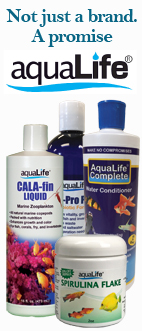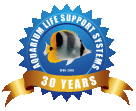Jim's CO2 Review
Test Results for the Nutrafin CO2 Natural Plant System
By Jim Gartner, Staff Member
After hearing numerous success stories from fellow aquarists, I decided to install the Nutrafin CO2 Natural Plant System on my 46 gallon bow tank on October 19, 2004.
In my tank, I have six large Amazon Sword plants, seven Cyptocoryne Wendtii, one Cyptocoryne Lecens, two Cyptocoryne Spiralis, two bunches of Rotala, three bunches of Ludwigia Mullertii, and several Valsaleria plants. Before I installed the CO2 system, most plants appeared happy but showed no significant growth.
Forty-five minutes after the CO2 canister was installed, the first bubble emerged in the diffuser. The bubbles climbed up the diffuser, slowly decreasing in size as they reached the top of the diffuser.
After several days, the reactor released approximately six bubbles a minute, my pH dropped 6.8 to 6.4, with no noticeable change in the plants. After fourteen days, I noticed a big change in my plants, overnight! Most plants changed from a pale green to a bright green and were giving off oxygen bubbles, appearing very healthy.
On November 8, I added a second fluorescent bulb. When I added a second bulb previously, the only change was an increase in algae. The CO2 system increased the plants� ability to absorb nutrients from the water by increasing their growth rate; therefore, the competing algae was unable to profit from the extra lighting.
I recharged the canister after twenty-four days, because the CO2 bubble count lowered. Another problem was that the house became cooler due to the cold weather, which caused the canister to produce less bubbles. To correct this, I put the canister in a insulated cooler and equipped the cooler with a 15-watt light bulb, generating a low heat. In addition, I installed the light on the same timer powering my tank lights so the low heat generated a greater bubble count while the tank lights were operating.
As of November 16, my Amazon Sword plants were greener and stood taller. The Cyptocoryne Wendtii grew two inches, the Cyptocoryne Lecens turned bright green, and the Cyptocoryne Spiralis added more leaves. The Rotala went from almost dead to a new, bright green growth, and the three bunches of Ludwigia Mullertii reached the top of the tank, forcing me to trim their lush, flowing tops.
Conclusion: the pH is still 6.4 to 6.6, and I was able to increase my lighting without creating an algae problem. All of my plants are showing great improvement with increased growth and healthy, vibrant color. I�m sold on adding CO2 to a planted tank!



